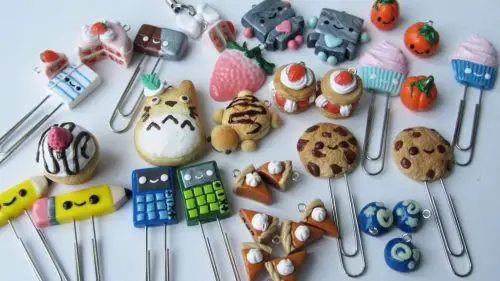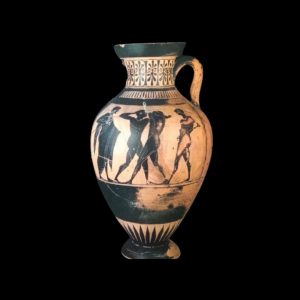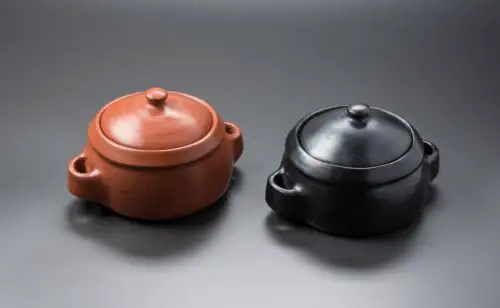Want to get into the world of ceramics but don’t know which material to start with? This blog is for you, here you will learn everything about the perfect material for beginners, namely polymer clay or also called polyclay.
Table of Contents
What is polymer clay?
Polymer clay is one of the easiest clays to make if you are new to ceramic art.
It is a malleable paste made from PVC (polyvinyl chloride), a plastic made from vinyl chloride. In addition to PVC, the modeling clay contains oils with a cold consistency comparable to school modeling clay.
The main difference between polymer clay and play dough is that polymer clay must be fired and not simply allowed to air dry like play dough is often the case.
History
Polymer Clay was developed as a replacement for a similar product called Bakelite, which manufacturing was forbidden due to its flammable content.
Polymer clay is not a new invention but was developed in Germany in the 1930s by doll maker Fifi Rehbinder. This clay was therefore called Fifi Mosaic at the time.
A few years later, in 1964, this idea was bought by a company that marketed the clay under the brand name FIMO, which is now the best known on the market. The origin of this name comes from the first syllables of its former name, Fifi Mosaic.
Comparison with cold porcelain
Polymer clay and cold-paste porcelain are often compared to each other because the objects usually made of clay are technically the same as those made of cold-paste porcelain.
Advantages of Cold Porcelain
- It is much softer and easier to work with than polymer clay. Therefore, it is ideal for children as it is easier to shape.
- There are no fingerprints when handling the material.
- It can be mixed with paints if a specific color is desired.
- It dries in the ambient air, i.e. there is no need of a kiln.
Disadvantages of cold porcelain
- Cold porcelain melts when in contact with water or high heat.
- It is not as durable as polymer clay crafts.
Advantages of Polymer Clay
- When it dries it is very firm, hard, and resilient.
- When it dries it does not crack.
- It’s a perfect material if you want a rustic and handmade style.
- It is non-toxic.
Disadvantages of polymer clay
- It is somewhat more difficult to shape than cold-paste porcelain.
- It tends to collect a lot of dirt.
- Fingerprints will remain when the figure is cast.
- It is more expensive than cold porcelain.
- You need a steady hand when decorating pieces.
What can we use polymer clay for?
It is not the type of clay that we normally use to make vases, crockery, and similar items, but mainly for making small items.
The most common items made from this material are jewelry, costume jewelry such as necklaces, earrings, handles or handicrafts such as table decorations.
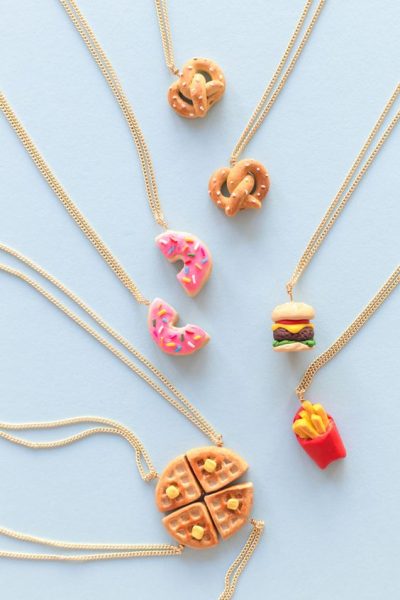
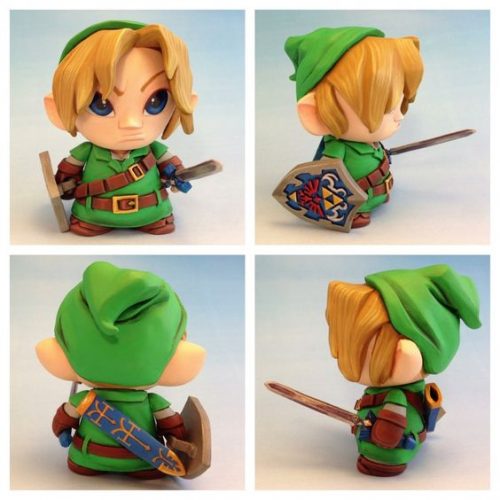
Tomado de: AnnCraftsBlog
How to make polymer clay at home?
Materials
To make your own polymer clay you will need the following materials:
- 1 non-stick pot.
- 1-cup liquid glue.
- 1-tablespoon vinegar or lemon.
- 1-cup cornmeal.
- 2 tablespoons mineral oil.
- Powdered tempera paints in different shades.
Step by step
1. Heat the non-stick pan over low heat.
2. When it’s hot, you can start mixing all of the above materials including the tempera or the paint.
3. You can use inks, tempera, enamels, or acrylics commonly used in crafting. Rosetta or Produart are well-known brands on the market that you can use for your pieces. After mixing all the ingredients well, let the batter rest in the non-stick pan over low heat for 10 minutes.
4. After 10 minutes, you can take the dough out and let it cool down.
5. Now you need to knead the clay to give it the desired structure.
6. After the desired texture is achieved, one can take care of the design of the desired figure.
_________________________________________________________
For example, you can make a polymer clay flower with the following steps:
- Make 5 or 9 *coils(oblong rolls) of the same size to form the flower petals as you can see in the picture.
- A small piece of clay of a different color is used to form a small ball that will form the center of the flower.
- Now you can take the churros and shape them like a drop of water. If they don’t all look the same, don’t worry, it’s just a matter of practice.
- When you have turned the 9 churros into water drops or flower petals, you can put them together so that all the ends are in the middle and glue them together.
- We are nearly finished! To finish the shape of our flower, you’ll need to flatten the polymer clay ball you made at the beginning a bit to place it in the center of the flower.
_________________________________________________________
7. Now the flower or any other shape you want to make is baked at a temperature between 110ºC and 135ºC for about 15 to 30 minutes.
8. Add little artistic touches to your flower to finish it off! You can make small lines in the middle of each petal, put dots in the middle and to make it even more beautiful you can use as many petals as you want.
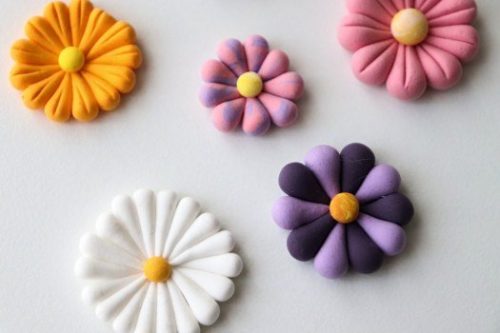
How to store and preserve polymer clay
Do not leave the clay in the sun or in a very hot place, as it is best kept in a cool place, e.g. B. stored in the refrigerator and then has a long shelf life.
Some tips for storing clay:
If you want your play dough to last a long time, you need to make sure you store it properly.
- You can put the different colors of play dough in different airtight bags so they don’t get mixed up or mixed up.
- You can also store them in different glass containers.
If you store your clay well, it can last for years. Some artisans recommend not keeping the clay for more than 1 year, but if the clay is still workable after a year, you can use it without any problems.
Polymer clay brands
Of course, you can also buy the raw material ready-made. Below are some brands.
FIMO
As previously mentioned, this is the oldest and most well-known brand of polymer clay on the market.
There is a wide range of colors and different types of clay, such as FIMO SOFT, which is softer than the others, and FIMO CLASSIC, which is stronger and used for costume jewelry.
They are available in 57g bars and 50g liquid. These are available online from Amazon or at stores that specialize in arts and crafts.
FIMO is highly recommended for everyone who wants to use it, both experts and beginners. Besides different types of clay, there is also a wide variety of colors, making it the best and most interesting material among all brands.
SCULPEY
This is the most recognized brand in the United States and unlike others, pieces made with this brand must be baked at 130ºC for 15 minutes, not at 110ºC for 30 minutes like FIMO.
It can be found on Amazon and related stores in 42g and 57g presentations.
The polymer clay of this brand is ideal for beginners as it is often used for schoolwork and children’s free time, although like FIMO it has 2 other variants (Sculpey Living Doll Paste and Supersculpey) that make it very special.
KATO POLYCLAY
Known as one of the most difficult products to work with because it hardens very quickly, it is the perfect brand for experts in the field. In addition, it leaves very fine finishes and shines when the piece is sanded and polished.
It has more variety in the presentations, such as a large bar of 354g, another of 56g and a pack of 112g in which there are 4 bars of polymer clay of different colors.
We hope that this blog will help you to create your desired piece from scratch if you decide to make the clay yourself and that you will become more and more immersed in the interesting world of crafts and ceramics.

